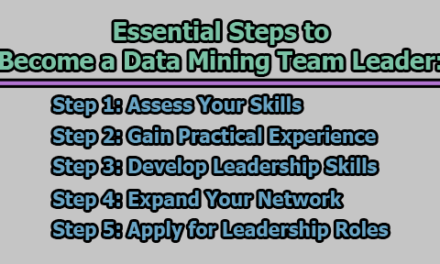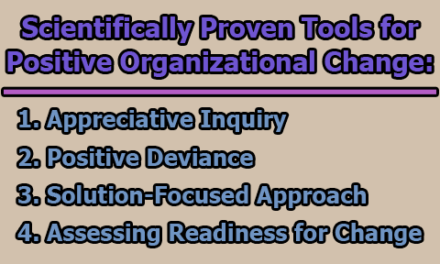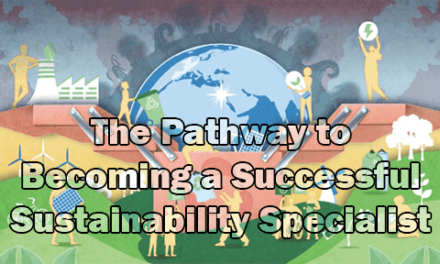Best Practices for Staying Productive on the Job:
In today’s fast-paced and competitive work environment, staying productive is paramount for achieving personal growth, career success, and overall job satisfaction. However, with numerous distractions and demands vying for our attention, maintaining productivity can be challenging. This article explores a comprehensive set of effective best practices that professionals can adopt to enhance their productivity and efficiency at work. Whether you are an employee, manager, or entrepreneur, these strategies will help you optimize your performance and achieve your goals while maintaining a healthy work-life balance. Best practices for staying productive on the job.
1. Set Clear and Realistic Goals: The foundation of productivity lies in defining clear and achievable goals. Without a sense of direction, you risk becoming overwhelmed by the sheer volume of tasks that require attention. Whether it’s a daily to-do list or long-term objectives, setting specific, measurable, attainable, relevant, and time-bound (SMART) goals provides a roadmap for your efforts. When you have a well-defined target, you can channel your energy towards tasks that directly contribute to your success, leading to a more focused and efficient work routine.
2. Prioritize Tasks Effectively: As professionals, we often face an avalanche of tasks that need to be completed within limited time frames. To make the most of your time and energy, adopting effective task prioritization techniques is essential. One such approach is the Eisenhower Matrix, which categorizes tasks into four quadrants:
a) Important and Urgent: These are tasks that require immediate attention and directly contribute to your long-term goals. Addressing them promptly is crucial to avoiding crises and maintaining productivity.
b) Important but Not Urgent: These tasks are significant but do not have an imminent deadline. Allocate time to work on them proactively, preventing them from becoming urgent later on.
c) Urgent but Not Important: These tasks demand immediate attention but do not contribute significantly to your overall objectives. Delegate or eliminate these tasks whenever possible to free up time for more critical responsibilities.
d) Neither Urgent nor Important: These tasks are time-wasters and offer little value. Avoid engaging in such activities during work hours to maintain focus and productivity.
3. Time Management Techniques: Time management is at the core of productivity. Several effective techniques can help you manage your time efficiently:
a) Pomodoro Technique: This technique involves breaking your work into focused intervals of 25 minutes, followed by a short break of 5 minutes. After completing four intervals, take a more extended break of 15-30 minutes. This approach helps maintain concentration and prevents burnout by providing regular rest periods.
b) Time Blocking: Allocate specific time blocks for different tasks or activities. By structuring your day, you reduce distractions and ensure you give your full attention to each task. This method helps maintain a healthy work-life balance by preventing work from encroaching on personal time.
c) Eat the Frog: Coined by Mark Twain, this principle advises tackling the most challenging task of the day first. By completing it early, you’ll feel a sense of accomplishment and gain momentum for the rest of the day, making the other tasks seem more manageable.
4. Minimize Distractions: In the digital age, distractions are aplenty, and they can significantly impede productivity. Identifying and eliminating distractions is crucial to maintaining focus:
a) Limit Social Media Usage: Social media platforms are notorious productivity killers. Set designated times for checking social media or use website blockers to restrict access during work hours.
b) Create a Distraction-Free Workspace: Organize your workspace and minimize clutter. Inform colleagues about your focus time, and use “do not disturb” signals to discourage unnecessary interruptions during critical work.
c) Manage Email Effectively: Constantly checking and responding to emails can disrupt workflow. Set specific times to check and respond to emails instead of being reactive to every incoming message. Consider turning off email notifications during concentrated work sessions.
5. Continuous Learning and Skill Development: Investing in continuous learning and skill development enhances productivity in the long run. The professional landscape is ever-evolving, and staying stagnant can hinder progress. Here are some ways to invest in self-improvement:
a) Attend Workshops and Webinars: Participate in workshops and webinars related to your field of expertise. These events offer valuable insights, networking opportunities, and exposure to the latest trends and technologies.
b) Pursue Online Courses: Online platforms offer a wide range of courses that cater to various professional interests and industries. Enroll in courses that align with your career goals to gain new skills and knowledge.
c) Seek Mentors and Coaching: Having mentors or coaches can provide valuable guidance, feedback, and support in your professional journey. They can help you navigate challenges and provide insights for personal growth and improvement.
6. Embrace Technology: Leveraging technology can streamline your workflow and boost productivity:
a) Task Management Tools: Utilize task management apps like Trello, Asana, or Todoist to organize and track your tasks effectively. These tools allow you to break down complex projects into smaller, manageable tasks, and collaborate with team members efficiently.
b) Communication Tools: Collaborate seamlessly with colleagues using communication tools like Slack or Microsoft Teams. These platforms facilitate real-time communication, reducing the need for lengthy email threads.
c) Automation: Identify repetitive tasks that can be automated using tools like Zapier or IFTTT. Automation saves you time and effort, allowing you to focus on more strategic and creative aspects of your work.
7. Cultivate a Healthy Work-Life Balance: Overworking and burnout can have detrimental effects on productivity and overall well-being. Strive to maintain a healthy work-life balance to sustain productivity and avoid professional exhaustion:
a) Set Boundaries: Clearly communicate your working hours to colleagues, friends, and family to avoid work spilling over into personal time. Prioritize self-care and be assertive about taking time off when needed.
b) Take Regular Breaks: Incorporate short breaks throughout the day to rejuvenate your mind and prevent mental fatigue. Stepping away from work for a few minutes can re-energize you and boost productivity when you return.
c) Pursue Hobbies and Interests: Engage in hobbies and activities outside of work to relax and recharge. Pursuing interests unrelated to your profession fosters creativity and helps you approach challenges with a fresh perspective.
8. Foster a Positive Work Environment: A positive work environment can significantly impact productivity and overall job satisfaction:
a) Supportive Leadership: Managers and leaders should provide support, resources, and constructive feedback to enable employees to thrive. A positive and supportive work culture encourages employees to excel and be proactive.
b) Collaboration and Teamwork: Encourage open communication and collaboration among team members to foster creativity and innovation. When team members work together cohesively, they can achieve shared goals efficiently.
c) Celebrate Achievements: Recognize and celebrate accomplishments, both big and small, to boost morale and motivation. Acknowledging the efforts of individuals and teams encourages them to maintain their productivity and dedication.
In conclusion, staying productive on the job is a continuous journey that requires a combination of effective strategies and a focused mindset. By setting clear goals, prioritizing tasks, managing time efficiently, minimizing distractions, and embracing technology, professionals can optimize their productivity and accomplish more in less time. Continuous learning, maintaining a healthy work-life balance, and fostering a positive work environment are equally vital for achieving sustainable productivity levels and ensuring long-term success and fulfillment in one’s career. Remember, productivity is not just about working harder; it’s about working smarter and adopting practices that align with your values and goals. By incorporating these best practices into your daily routines, you can enhance your performance, achieve your professional aspirations, and lead a more fulfilling and balanced life.
Frequently Asked Questions [FAQs]:
How can I stay productive on the job when faced with numerous tasks and deadlines?
Prioritize tasks based on their importance and urgency. Adopt time management techniques like the Pomodoro Technique and time blocking to maintain focus. Set clear and achievable goals to provide direction and structure to your work.
What is the Pomodoro Technique, and how does it help with productivity?
The Pomodoro Technique is a time management method that involves breaking work into intervals, typically 25 minutes each, separated by short breaks. Working in focused intervals helps maintain concentration and prevents burnout, while the breaks allow for rest and rejuvenation.
How can I minimize distractions at work and stay focused?
Limit social media usage during work hours and create a distraction-free workspace. Manage email efficiently by setting specific times for checking and responding to messages. Inform colleagues about your focus time to avoid unnecessary interruptions.
How can continuous learning and skill development enhance productivity in the workplace?
Investing in continuous learning keeps you updated with industry trends and new technologies, making you more efficient in your role. Learning new skills also boosts confidence and empowers you to take on more challenging tasks.
What are some effective tools for task management and collaboration?
Popular task management tools include Trello, Asana, and Todoist, which help you organize and track tasks. For collaboration, platforms like Slack and Microsoft Teams facilitate real-time communication and seamless teamwork.
How can I maintain a healthy work-life balance while staying productive?
Set boundaries by clearly communicating your working hours to avoid work encroaching on personal time. Take regular breaks throughout the day to prevent burnout. Engage in hobbies and activities outside of work to relax and recharge.
How can I foster a positive work environment to enhance productivity?
Supportive leadership, open communication, and collaboration among team members contribute to a positive work environment. Celebrate achievements and provide constructive feedback to encourage a motivated and productive team.
Is multitasking an effective way to boost productivity?
Multitasking can lead to decreased productivity and reduced quality of work. Instead, focus on one task at a time to ensure you give it your full attention and produce better results.
How can I handle work-related stress and avoid burnout?
Practice stress-reduction techniques like meditation, exercise, and deep breathing. Take breaks to recharge, and don’t hesitate to seek support from colleagues or supervisors if you feel overwhelmed.
How can I deal with procrastination and stay on track with my tasks?
Break tasks into smaller, manageable parts to make them less daunting. Set deadlines for each part and hold yourself accountable. Consider using productivity apps or tools that block distracting websites during work hours.

Library Lecturer at Nurul Amin Degree College










